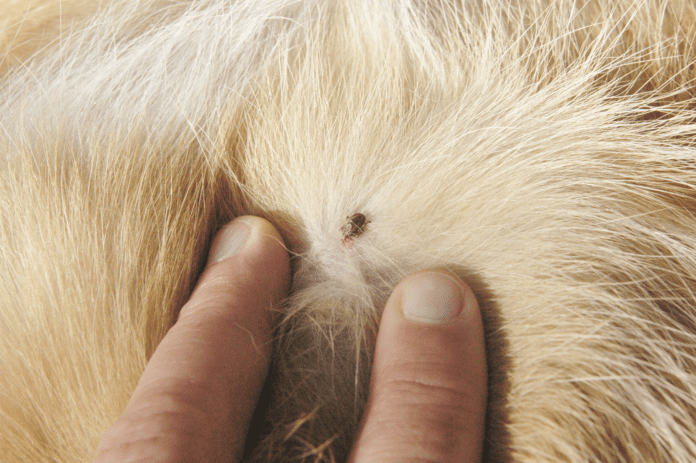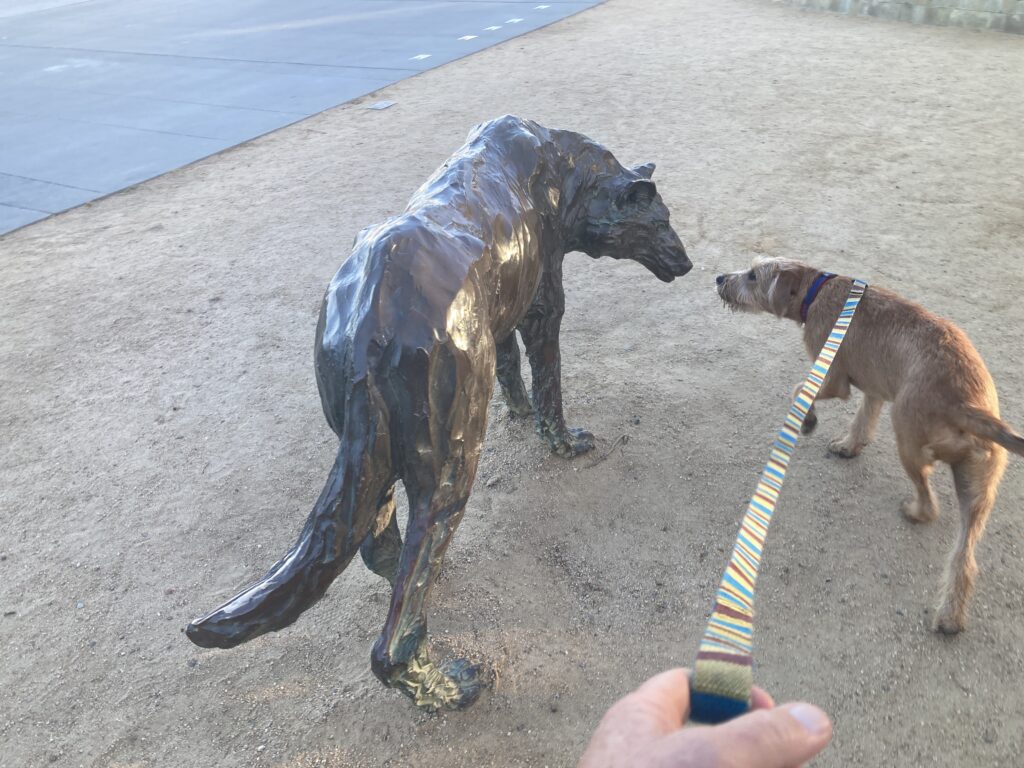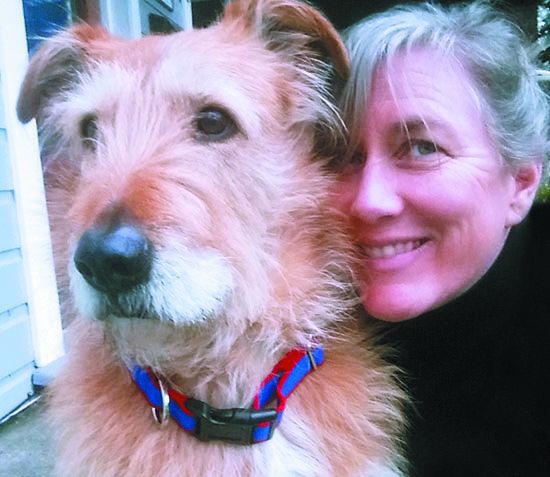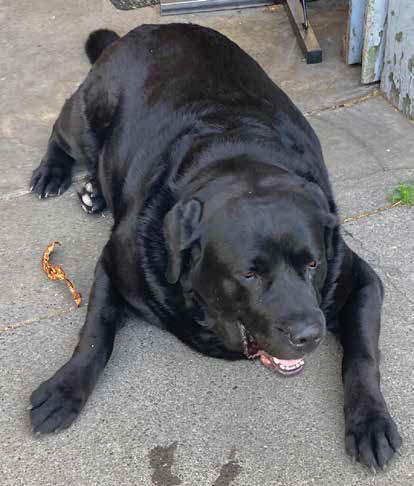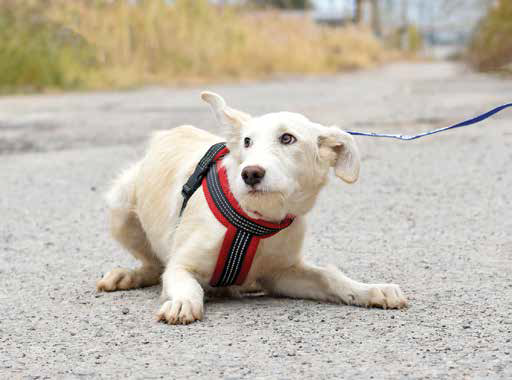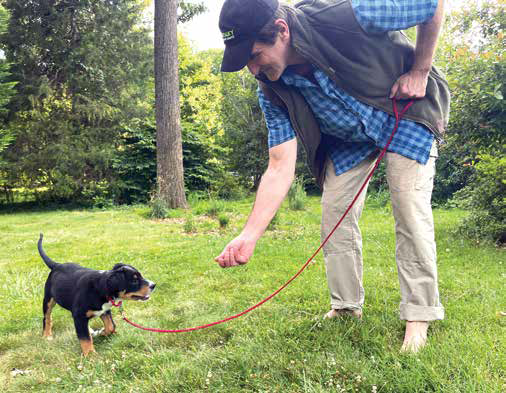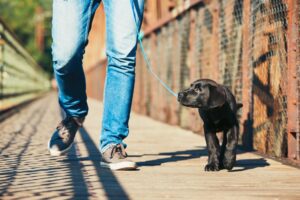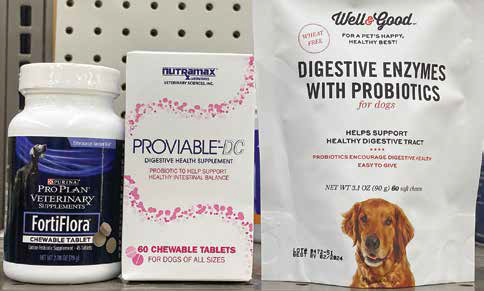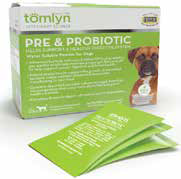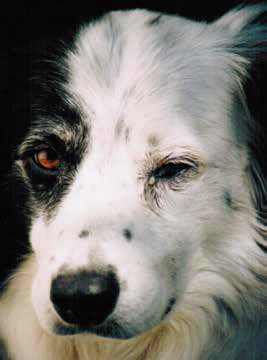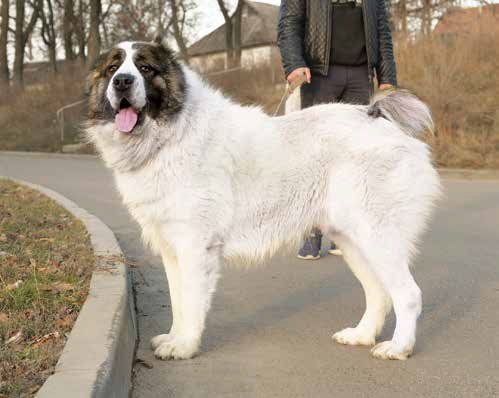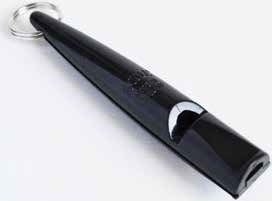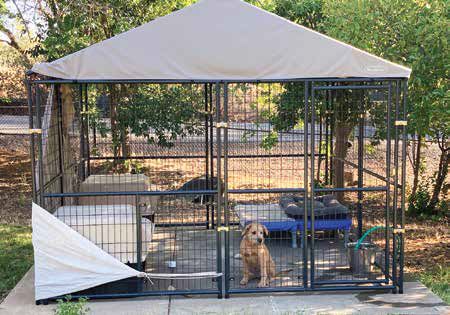It’s been a long day and you’re finally enjoying some quiet time with your dog. Your fingers are coursing through his coat when you feel a small lump on his skin. Parting his fur, you find something fastened to your dog’s skin that looks like a tick. But how do you know it’s a tick?
If a tick has been attached to your dog for more than a day or two, it will be engorged with your dog’s blood. Engorged ticks will have a gray, oval-shaped body with a brown or black head and legs – but note that when a tick is biting and attached to your dog, you won’t be able to see its head. Using a magnifying glass – or perhaps just the zoom feature on your cell phone – you may be able to see a row of waving legs on either side of the engorged body (ticks have eight legs, with four on either side of their bodies, like spiders). If the tick has only recently bitten your dog, it may be as small as the kernel inside a sunflower seed; if it’s been attached for longer, it may be as plump as a grape.
Be cautious if you’ve found a small brown, black, or pink lump on the underside of your dog’s chest or belly; it might be a nipple! Both male and female dogs have nipples. If you are not sure if what you have found is a tick, please contact your veterinarian. They may ask you to send them a picture of what you have found.
What are the different types of ticks found on dogs?
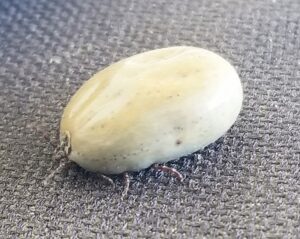
There are a number of species of ticks that are frequently found on dogs; most common are “deer ticks” (also informally called black-legged ticks) and “dog ticks” (Dermacentor variabilis, also called American Dog Ticks, and Brown Dog Ticks, Rhipicephalus sanguineus). Deer ticks are small – before they’ve had a blood meal, they may be as small as a poppy seed. Dog ticks are larger, perhaps as broad as a single pea (though nearly flat before they’ve fed). Depending on the species, dog ticks may have a plain brown body or be brown with red-dotted bodies and a grey “shield” on the back of its “neck” area. Each species of tick carries different bacterial species that can cause disease in the animals that the tick feeds on.
Ticks await their prey by climbing onto grass, trees, and brush and quickly grab onto anything that brushes by them. They can crawl pretty rapidly through your dog’s fur – or equally fast up the leg of your pants!
Ideally, dog owners groom their dogs after they’ve been in any environment frequented by ticks. Brush your dog while looking for any loose or attached ticks – or use a brush and a tape roller in alternating strokes, to loosen and then capture any crawling ticks.
How to Remove a Tick from a Dog
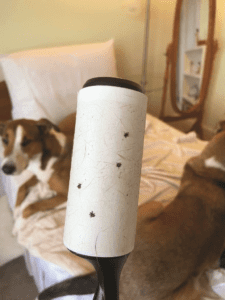
Don’t delay if you find a tick attached to your dog. Remove it right away with a pair of tweezers or use a tick removal tool, such as the Tick Twister, Tick Tornado, or our favorite, the Pro-Tick Remedy. Tick removal tools are available for purchase online or at your favorite pet supply retailer. (See our review of tick-removing tools, “How to Get the Tick Out,” WDJ July 2019.)
Tick removal tools come with instructions on how to remove the tick. If you are using tweezers, hold the tweezers parallel to the skin. Grasp the head of the tick as close to the skin as possible. Pull the tick straight up and away from the skin to remove it.
Once the tick is removed, place the tick in rubbing alcohol or a zipper storage bag and discard it in the trash. You may also flush the tick down the toilet. Do not squeeze the tick! Squeezing the tick could expose you and your dog to the bacteria contained within it.
When it comes to tick removal, there are a number of well-known methods that should be avoided. Don’t use the end of a burnt match or lit cigarette or try to smother the tick with petroleum jelly or nail polish. These old-timey techniques can hurt your dog, increase the amount of time the tick is attached, and cause the tick to release more bacteria or protozoa into the bite site—both of which increase the risk of disease transmission. – Kim Thornton from “Dog Owner’s Guide to Types of Ticks“
Care for a Tick Bite on a Dog After Removal
The dog’s skin where the tick was attached may become raised and red. A scab may develop over the tick attachment site and remain there for a few days. These spots do not typically become infected and do not require an antibiotic cream or ointment. Contact your veterinarian if the tick attachment site grows larger or develops a yellow or green discharge.
Dogs do not develop the red, bullseye rash that some humans do when they have been bitten by a tick that transmitted Lyme disease. However, dogs will sometimes develop a red bullseye lesion about ½-inch in diameter when they have been bitten by black flies or horse flies. These are usually seen on the underbelly of the dog where their fur is thinner and the skin is easier to see. These lesions are typically not itchy and will resolve on their own in a few days.
If you found an attached tick – and especially if you found more than one attached tick – have your dog tested for Lyme and the other tick-borne diseases that are prevalent in your area about four to six weeks after you have removed the tick/s. Talk to your veterinarian about what high quality flea/tick preventative they recommend and use that preventative all year, even in winter. Adult ticks remain active during the winter months in most areas of the United States.


